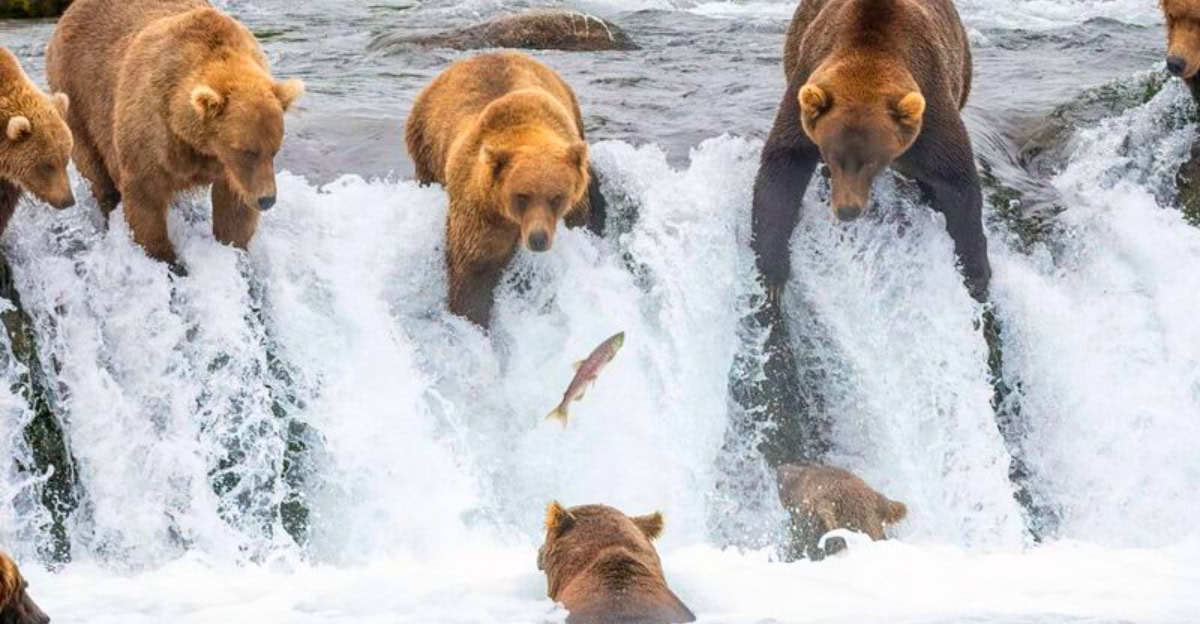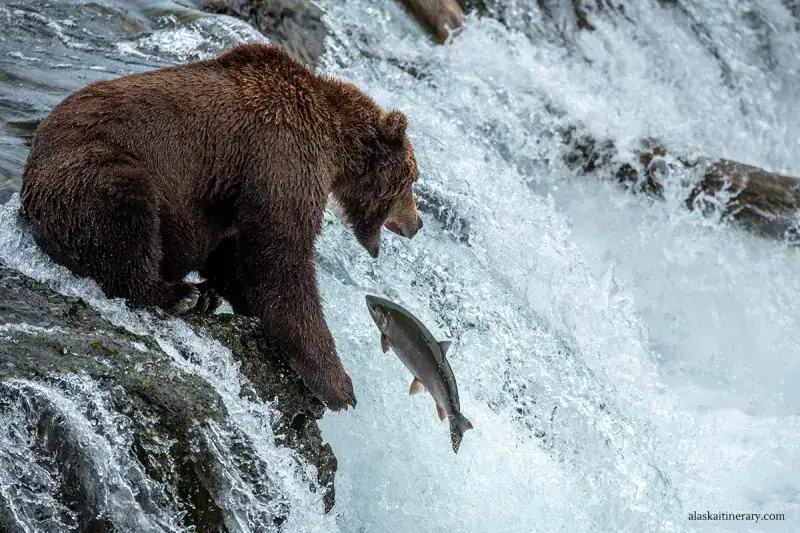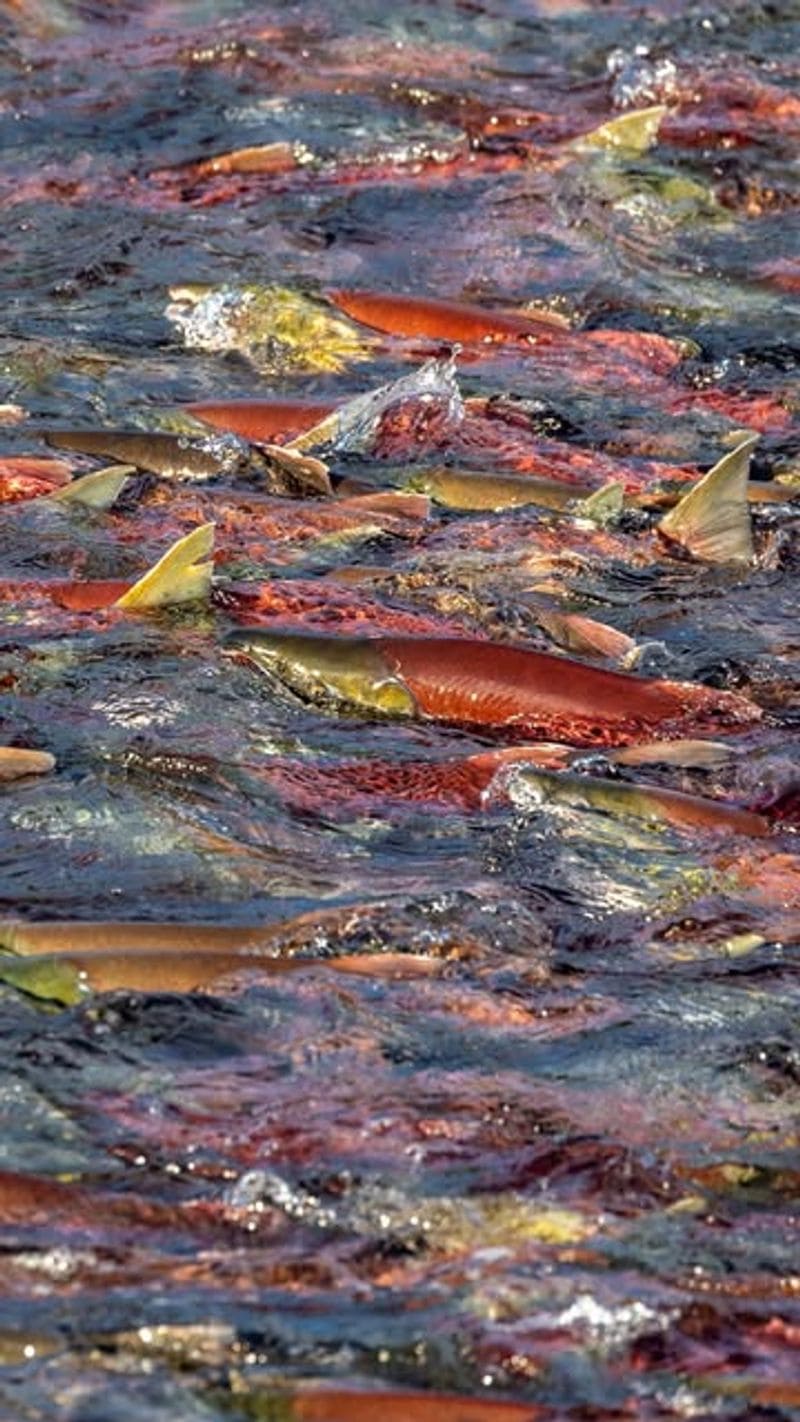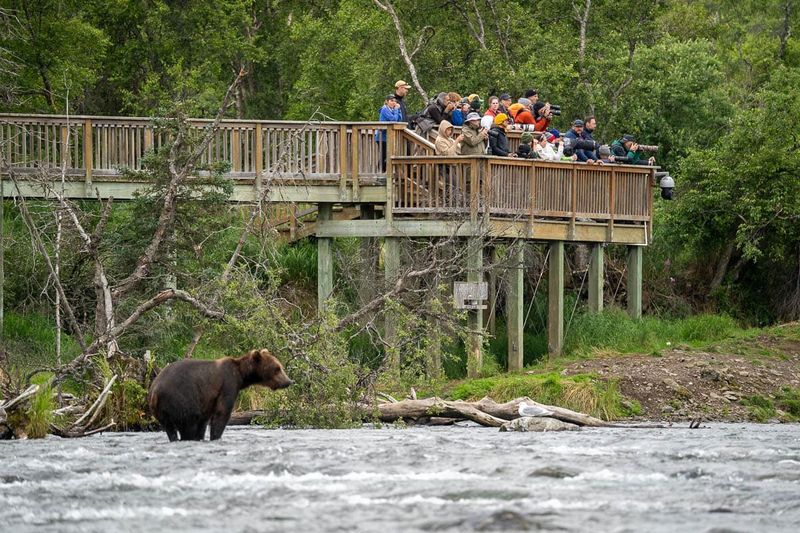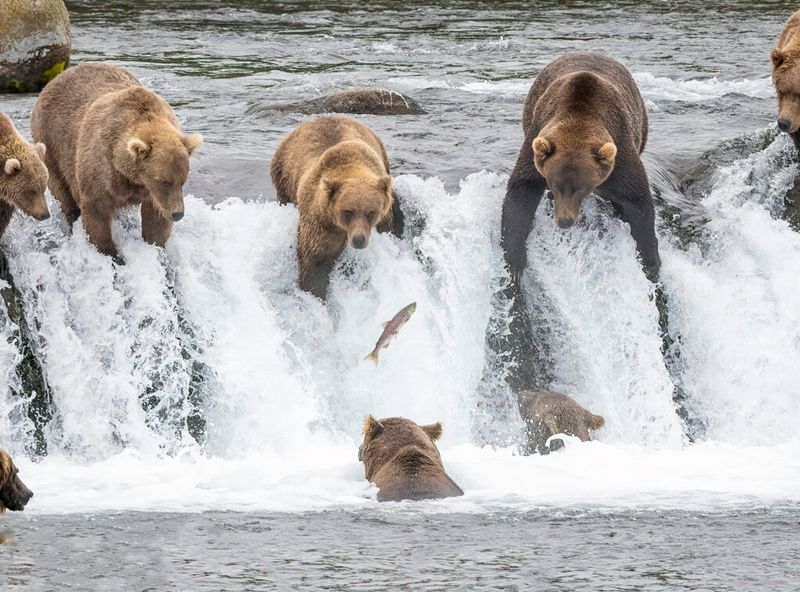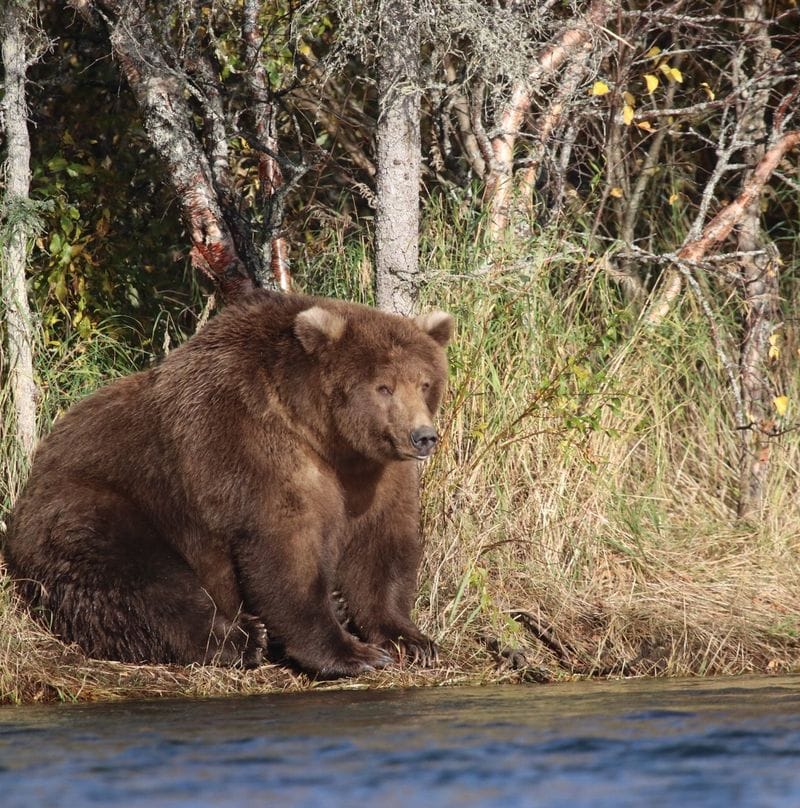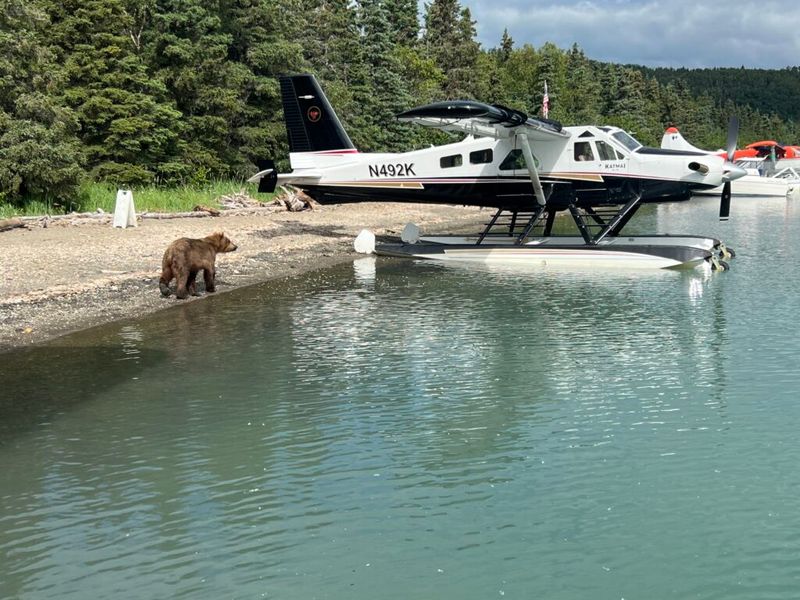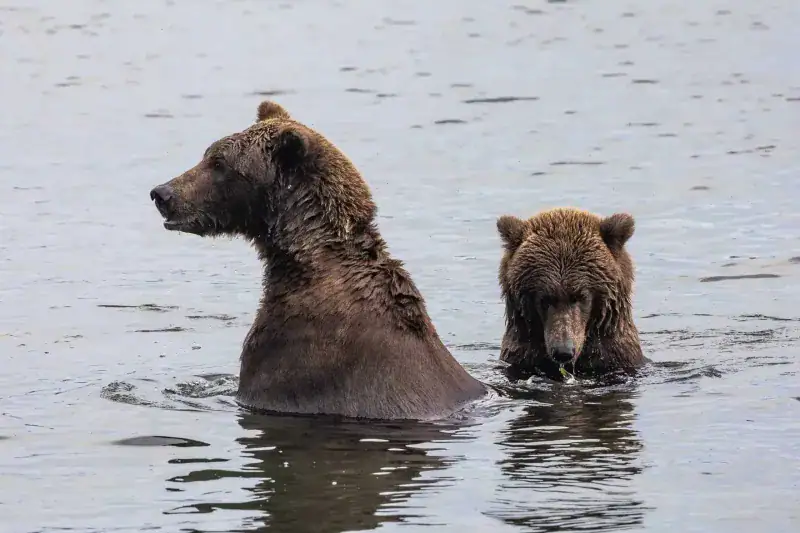Katmai National Park in Alaska offers one of the world’s most incredible wildlife experiences. Every summer, dozens of massive brown bears gather at Brooks Falls to catch jumping salmon in an amazing natural spectacle. Visitors can safely watch these powerful predators up close from special viewing platforms. Planning your bear-watching adventure requires some insider knowledge to make the most of this once-in-a-lifetime experience.
1. Brooks Falls: The World’s Most Famous Bear-Watching Spot
Brooks Falls transforms into nature’s ultimate theater every July when dozens of brown bears arrive for their annual fishing festival. From elevated viewing platforms, lucky visitors often spot 20 to 40 bears at once, each displaying unique fishing techniques.
Some bears position themselves right at the waterfall’s edge, snatching salmon mid-leap with lightning-fast reflexes. Others prefer wading into the rushing water below, using brute strength to corner their slippery prey.
The variety of hunting styles makes every moment unpredictable and exciting. Patient bears wait motionless for the perfect catch, while energetic ones splash through the rapids with determination.
2. The Sockeye Salmon Migration
Millions of bright red sockeye salmon create an underwater highway as they swim upstream to spawn each summer. This incredible migration draws hungry bears from across the region, turning Brooks Falls into Alaska’s most popular restaurant.
The salmon run timing varies slightly each year, but July typically offers the most spectacular action. Fish leap desperately up the waterfall, trying to reach their spawning grounds while avoiding hungry bear jaws.
Understanding this natural cycle helps visitors appreciate why bears gather here in such large numbers. The salmon provide essential calories bears need to survive the long winter hibernation ahead.
3. Safe, Up-Close Viewing Platforms
Katmai’s ingenious design protects both visitors and bears through carefully placed elevated boardwalks and viewing platforms. These structures provide front-row seats to bear activity while maintaining crucial safety distances.
The main viewing platform at Brooks Falls accommodates about 40 people at once, creating an intimate yet secure wildlife experience. Rangers strictly enforce safety rules and time limits during busy periods.
Additional platforms along the Brooks River offer different perspectives and often fewer crowds. The elevated design allows bears to move freely underneath without human interference, preserving their natural behaviors and feeding patterns.
4. Different Bear Behaviors on Display
Every bear has developed its own signature fishing style, creating an entertaining cast of characters for visitors to observe. Some bears dive headfirst into turbulent rapids, while others sit patiently at the waterfall’s top like furry fishing experts.
Dominant bears claim the best fishing spots, forcing younger or smaller bears to find creative alternatives. You might see bears fishing from riverbanks, shallow pools, or even attempting underwater dives.
Watching these distinct hunting strategies unfolds like nature’s reality show, with each bear displaying unique personality traits. Patient observers often develop favorites among the regular fishing champions who return year after year.
5. Fat Bear Week
Every October, Katmai celebrates its bears’ impressive weight gain with Fat Bear Week, an online competition that has captured hearts worldwide. Visitors vote for their favorite chunky champion who has packed on the most pounds preparing for hibernation.
This lighthearted tournament highlights the serious business of survival in Alaska’s wilderness. Bears must double their body weight during salmon season to survive months without eating during winter sleep.
Fat Bear Week has become a social media sensation, introducing millions of people to Katmai’s bears and conservation efforts. The competition proves that environmental education can be both fun and meaningful for audiences everywhere.
6. A True Wilderness Experience
Reaching Katmai requires either a small plane or boat journey, making it one of America’s most remote national parks. This isolation ensures bears live completely wild and free, far from urban development and human interference.
No roads connect Katmai to the outside world, preserving its pristine wilderness character. The journey itself becomes part of the adventure, with scenic flights over volcanic landscapes and pristine coastlines.
This remoteness means bears behave naturally without the wariness often seen in more accessible parks. Visitors experience authentic Alaska wilderness where nature still rules supreme and human presence remains minimal and respectful.
7. Best Times to Visit
July represents peak season for bear activity during the intense salmon run, offering visitors the highest chances of seeing multiple bears fishing simultaneously. The action-packed scenes during this month create unforgettable wildlife viewing opportunities.
September provides a completely different but equally rewarding experience, showcasing bears at their absolute fattest before hibernation begins. These chunky champions move more slowly but demonstrate impressive bulk from months of successful fishing.
Both seasons deliver distinct advantages for wildlife enthusiasts. July offers energetic fishing action and salmon-jumping spectacles, while September showcases the remarkable transformation bears undergo preparing for their long winter sleep ahead.
